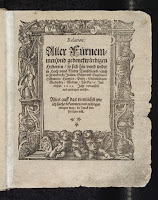The Boston News-Letter
It was heavily subsidized by the British government, with a limited circulation. All copies were approved by the governor.
Year & Region
First published on April 24, 1704, is regarded as the first continuously published newspaper in British North America.
First published on April 24, 1704, is regarded as the first continuously published newspaper in British North America.
Published
The News-Letter was noted for its pro-British sympathies, and the words “published by authority” appeared on its front page.
The News-Letter was noted for its pro-British sympathies, and the words “published by authority” appeared on its front page.
Issue
The News-Letter was originally issued weekly as a half sheet, a single page printed on both sides, 8 inches (200 mm) x 12 inches (300 mm), dated “From Monday, April 17, to Monday, April 24, 1704.” The printer was Bartholomew Green. The News-Letter’s first editor was John Campbell, a bookseller and postmaster of Boston.
The News-Letter was originally issued weekly as a half sheet, a single page printed on both sides, 8 inches (200 mm) x 12 inches (300 mm), dated “From Monday, April 17, to Monday, April 24, 1704.” The printer was Bartholomew Green. The News-Letter’s first editor was John Campbell, a bookseller and postmaster of Boston.
Content
During its early years, the News-Letter was filled primarily with news from London journals describing English politics and the details of European wars. As the only newspaper in the colonies at the time, it also reported on the sensational death of Blackbeard the pirate in hand-to-hand combat in 1718.
During its early years, the News-Letter was filled primarily with news from London journals describing English politics and the details of European wars. As the only newspaper in the colonies at the time, it also reported on the sensational death of Blackbeard the pirate in hand-to-hand combat in 1718.
Editorship
In 1722 the editorship passed to Green, who focused more on domestic events. After his death in 1732, his son-in-law John Draper, also a printer, took the paper’s helm. He enlarged the paper to four pages and filled it with news from throughout the colonies. He conducted the paper until his death in 1762, at which time his son, Richard Draper, became an editor. Richard died in 1774, and his widow, Margaret Green Draper, published the News-Letter for the rest of its existence.
In 1722 the editorship passed to Green, who focused more on domestic events. After his death in 1732, his son-in-law John Draper, also a printer, took the paper’s helm. He enlarged the paper to four pages and filled it with news from throughout the colonies. He conducted the paper until his death in 1762, at which time his son, Richard Draper, became an editor. Richard died in 1774, and his widow, Margaret Green Draper, published the News-Letter for the rest of its existence.
Titles
The Boston news-letter. Apr. 24, 1704 – Dec. 29, 1726.
The Weekly news-letter. Jan. 5, 1727 – Oct. 29, 1730.
The Boston weekly news-letter. Nov. 5, 1730 – Aug. 25, 1757.
The Boston news-letter. Sept. 1, 1757 – Mar. 18, 1762.
The Boston news-letter, and New-England chronicle. Mar. 25, 1762 – Mar. 31, 1763.
The Massachusetts gazette. And Boston news-letter. Apr. 7, 1763 – May 19, 1768.
Boston weekly news-letter. May 26, 1768 – Sept. 21, 1769.
The Massachusetts gazette; and the Boston weekly news-letter. Sept. 28, 1769 – Feb. 29, 1776.
Print
In 1726 the Boston Gazette began publishing with Bartholomew Green, Jr., as printer.
In 1726 the Boston Gazette began publishing with Bartholomew Green, Jr., as printer.
Patronage
The Boston News-Letter went through a succession of printers and publishers ending with Margaret Draper, the widow of publisher Richard Draper and one of at least nine women printers during the Colonial Period. In this announcement of August 11, 1774, in the Massachusetts Gazette and the Boston Weekly News-Letter—the title on the masthead at this time—Mrs. Draper’s business skills and sincerity show as she appeals for continued patronage.
The Boston News-Letter went through a succession of printers and publishers ending with Margaret Draper, the widow of publisher Richard Draper and one of at least nine women printers during the Colonial Period. In this announcement of August 11, 1774, in the Massachusetts Gazette and the Boston Weekly News-Letter—the title on the masthead at this time—Mrs. Draper’s business skills and sincerity show as she appeals for continued patronage.
Copies
3,500 issues of the Boston News-Letter published from its founding through its demise.
3,500 issues of the Boston News-Letter published from its founding through its demise.
Perished
The News-Letter ceased publication in 1776 when the British withdrew from Boston, taking Margaret Draper, an ardent Loyalist, with them and giving her a life pension.
The News-Letter ceased publication in 1776 when the British withdrew from Boston, taking Margaret Draper, an ardent Loyalist, with them and giving her a life pension.
References
Wikipedia, American Antiquarian, Readex Blog, Britannica, Library of Congress, New England Historical Society, Stanford Search Works.
Wikipedia, American Antiquarian, Readex Blog, Britannica, Library of Congress, New England Historical Society, Stanford Search Works.






















